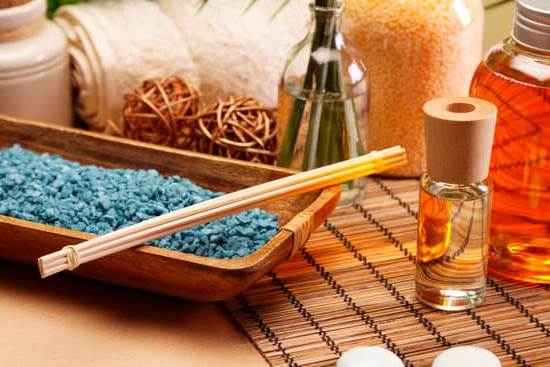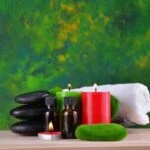Are you looking to elevate your aromatherapy experience? Learn how to make infused oil for aromatherapy and harness the power of nature for your holistic well-being. Infused oils are a popular and versatile product used in aromatherapy, offering a natural way to enhance relaxation, improve mood, and promote overall wellness.
Infused oils are created by steeping herbs, flowers, or botanicals in a carrier oil, allowing their beneficial properties to be extracted and infused into the oil. In this article, we will explore the benefits of using infused oils for aromatherapy and provide you with a step-by-step guide on how to create your own customized blends at home.
Whether you are new to aromatherapy or already familiar with its benefits, understanding the process of making infused oils can open up a world of possibilities for enhancing your self-care rituals. From choosing the right carrier oil to selecting the best herbs and botanicals for your needs, we’ll cover everything you need to know to get started on your journey to creating homemade infused oils for aromatherapy.
Choosing the Right Carrier Oil for Your Infused Oil
When making infused oil for aromatherapy, choosing the right carrier oil is crucial to ensure the effectiveness and safety of the final product. Carrier oils are used to dilute essential oils and botanicals, making them safe to apply on the skin or use in a diffuser. Different carrier oils have different properties and benefits, so it’s important to select one that complements the herbs and botanicals you plan to infuse.
One of the most popular carrier oils for infused oil in aromatherapy is jojoba oil. Known for its moisturizing and skin-nourishing properties, jojoba oil is often used as a base for infused oils used in massage or skincare routines. Another common carrier oil is sweet almond oil, which is lightweight and absorbs easily into the skin, making it suitable for various aromatherapy applications.
When selecting a carrier oil for your infused oil, consider not only its individual properties but also how well it will blend with the herbs and botanicals you intend to use. For example, if you plan to infuse lavender for relaxation purposes, a lighter carrier oil like grapeseed or apricot kernel may be more appropriate than heavier oils like coconut or olive.
In essence (no pun intended), the right carrier oil can make all the difference in your homemade infused oil for aromatherapy. The next time you embark on this aromatic journey, take the time to carefully choose a carrier oil that aligns with your desired therapeutic effects.
| Carrier Oil | Main Properties |
|---|---|
| Jojoba Oil | Moisturizing and skin-nourishing properties |
| Sweet Almond Oil | Lightweight and easily absorbed into the skin |
| Grapeseed Oil | Lighter weight; suitable for relaxation purposes |
Selecting the Best Herbs and Botanicals for Aromatherapy
When making infused oil for aromatherapy, choosing the right herbs and botanicals is essential to achieve the desired therapeutic benefits. Each herb and botanical contains unique properties that can enhance your aromatherapy experience, whether it’s for relaxation, mood enhancement, or alleviating certain ailments. Here’s how to select the best herbs and botanicals for your infused oil.
Understanding the Properties of Herbs and Botanicals
Before you begin selecting herbs and botanicals for your infused oil, it’s important to understand their individual properties. Some popular choices include lavender for relaxation, peppermint for invigoration, chamomile for calming effects, and eucalyptus for respiratory support. Research the specific benefits of each herb and botanical to determine which ones align with your aromatherapy goals.
Consideration for Personal Preferences
In addition to their therapeutic properties, consider personal preferences when selecting herbs and botanicals for your infused oil. Take into account scents that you enjoy and those that have a positive effect on your mood. For example, if you find the scent of lavender particularly calming, you may want to incorporate it into your infused oil for relaxation and stress relief.
Quality of Herbs and Botanicals
When choosing herbs and botanicals for aromatherapy-infused oils, always opt for high-quality organic options. This ensures that your infused oil will be free from pesticides or other harmful chemicals that could negate its therapeutic benefits. You can find quality herbs and botanicals at specialty stores or even grow them yourself if you have a green thumb.
By carefully considering these factors, you can select the best herbs and botanicals to create a custom-infused oil that suits your specific aromatherapy needs. Whether you’re looking to promote relaxation, lift your spirits, or alleviate certain symptoms, the right combination of herbs and botanicals can enhance your overall well-being through aromatherapy.
The Step-by-Step Process for Making Infused Oil at Home
Making infused oil for aromatherapy is a simple and rewarding process that allows you to harness the natural healing properties of herbs and botanicals. The first step is to choose the right carrier oil for your infusion. Popular choices include coconut oil, olive oil, sweet almond oil, and jojoba oil. Each carrier oil has its own unique properties, so be sure to select one that aligns with your aromatherapy goals.
Once you have selected your carrier oil, the next step is to choose the herbs and botanicals that will infuse it. Some popular choices for aromatherapy infused oils include lavender, chamomile, rosemary, and peppermint. It’s important to use dried herbs for your infusion to prevent any water content from causing mold or spoilage in the oil.
Now that you have your carrier oil and chosen herbs ready, it’s time to start the infusion process. There are two main methods for infusing oils: cold infusion and hot infusion.
Cold infusion involves placing the carrier oil and herbs in a sealed jar and letting it sit in a warm place for several weeks, while hot infusion involves gently heating the mixture on a stovetop. Whichever method you choose, be sure to follow a trusted recipe and keep an eye on the process to avoid overheating or burning the ingredients.
| Carrier Oils | Popular Herbs |
|---|---|
| Coconut Oil | Lavender |
| Olive Oil | Chamomile |
| Sweet Almond Oil | Rosemary |
| Jojoba Oil | Peppermint |
After your infused oil is ready, be sure to store it properly in a cool, dark place to preserve its potency. When using infused oils for aromatherapy purposes such as massage or diffusing, always perform a patch test before applying directly to skin and follow safety guidelines for each specific essential oil used in the infusion. By following these steps and considerations, you can create high-quality infused oils at home for all your aromatherapy needs.
Tips for Properly Storing and Preserving Your Infused Oils
When it comes to making infused oil for aromatherapy, it’s essential to learn how to properly store and preserve your creations. This will ensure that your infused oils maintain their potency and effectiveness over time. Here are some tips for storing and preserving your homemade infused oils:
1. Use dark-colored glass containers: When storing your infused oils, opt for dark-colored glass bottles or jars instead of clear ones. This helps protect the oils from exposure to light, which can degrade the quality of the oil over time.
2. Store in a cool, dark place: To prevent oxidation and rancidity, store your infused oils in a cool, dark place such as a pantry or cupboard. Avoid placing them near direct sunlight or heat sources, as this can also affect the oil’s stability.
3. Label and date your bottles: It’s important to label each bottle of infused oil with its contents and the date it was made. This will help you keep track of the different oils you have on hand and their shelf life.
4. Keep out moisture: Moisture can lead to mold growth in your infused oils, so make sure that the containers are properly sealed and stored in a dry environment.
By following these simple tips, you can ensure that your homemade infused oils for aromatherapy remain potent and effective for longer periods of time.
Exploring Different Methods of Infusion
Infusing oils with herbs and botanicals is a great way to harness the healing properties of plants for use in aromatherapy. Two popular methods for infusing oils at home are cold infusion and hot infusion. Both methods have their own benefits and it’s important to understand the differences between them to determine which method is best suited for your needs.
Cold infusion involves letting herbs and botanicals steep in carrier oils at room temperature over an extended period of time, usually several weeks. This gentle process allows the oil to slowly extract the beneficial compounds from the plant material, resulting in a mild and subtle infused oil. Cold infusion is ideal for delicate herbs and flowers that may lose their aromatic and therapeutic qualities when exposed to heat.
On the other hand, hot infusion involves using heat to speed up the extraction process. This method typically requires heating the carrier oil and plant material together over low heat for a shorter period of time, usually a few hours. Hot infusion can result in a more potent infused oil with a stronger aroma and higher concentration of active compounds from the herbs.
When considering how to make infused oil for aromatherapy, it’s important to take into account the specific properties of the herbs and botanicals you plan to use, as well as your intended use for the infused oil. Some herbs may be better suited for cold infusion, while others may benefit from hot infusion.
Experimenting with both methods can help you determine which works best for your preferences and desired results. Whether you choose cold or hot infusion, make sure to follow proper safety precautions when working with heat or storing infused oils to ensure their quality and effectiveness.
Utilizing Infused Oils for Various Aromatherapy Uses
Massage Therapy
One of the most popular uses for infused oils in aromatherapy is for massage therapy. When applying infused oil to the skin during a massage, the aromatic compounds are absorbed into the bloodstream through the skin and provide therapeutic benefits. To make an infused oil specifically for massage, consider adding herbs with calming and soothing properties such as lavender or chamomile. These herbs can help promote relaxation and reduce stress during a massage session.
Diffusing
Another common method of using infused oils for aromatherapy is through diffusion. This can be done by adding a few drops of infused oil to a diffuser or by placing a few drops on a cotton ball and inhaling the aroma directly. Different herbs and botanicals have different properties that can be beneficial when diffused. For example, eucalyptus infused oil can help clear nasal passages and improve breathing, while citrus-infused oils can uplift the mood and promote energy.
Other Uses
In addition to massage therapy and diffusion, there are countless other ways to utilize infused oils for aromatherapy. They can be added to bathwater for a relaxing soak, used in homemade candles or soaps for a pleasant aroma, or even incorporated into skincare products for their therapeutic benefits. The possibilities are endless when it comes to incorporating infused oils into your daily routine for overall wellness.
Overall, learning how to make infused oil for aromatherapy opens up a world of possibilities for creating personalized blends that cater to individual needs. Whether it’s for massage therapy, diffusing, or other creative uses, infused oils offer a natural and holistic approach to health and well-being.
Safety Precautions and Considerations When Using Infused Oils for Aromatherapy
When using infused oils for aromatherapy, it is important to take certain safety precautions and considerations into account to ensure that you are using them properly and minimizing any potential risks.
First and foremost, always perform a patch test before using any new infused oil on your skin, especially if you have sensitive skin or allergies. This can help prevent adverse reactions or irritation. To do a patch test, apply a small amount of the infused oil to a discreet area of your skin and wait 24 hours to see if there is any negative reaction.
Additionally, it is crucial to research the specific herbs and botanicals used in the infused oil to understand their potential effects and contraindications. Some herbs may not be suitable for use during pregnancy or breastfeeding, while others may interact with certain medications. Understanding how each herb interacts with the body can help you make informed decisions about which infused oils are safe for your personal use.
Furthermore, always store your infused oils in dark-colored glass bottles in a cool, dark place to prevent degradation from light and heat exposure. Proper storage will help maintain the quality and potency of the oils for longer periods of time.
By following these safety precautions and considerations, you can enjoy the benefits of using infused oils for aromatherapy while minimizing any potential risks to your health and well-being.
Conclusion
In conclusion, creating your own infused oils for aromatherapy can be a rewarding and beneficial experience. By harnessing the power of nature, you can customize your oils to suit your personal preferences and needs. Whether you are looking to relax and unwind after a long day or uplift your mood, learning how to make infused oil for aromatherapy allows you to take control of the scents and benefits that you want to incorporate into your daily routine.
The process of making infused oils at home not only allows you to tailor the scents to your liking but also gives you the opportunity to experiment with different herbs and botanicals. This hands-on approach gives you a deeper understanding and appreciation of the therapeutic properties of plants and their essential oils. With proper knowledge on how to make infused oil for aromatherapy, you can ensure that you are using high-quality ingredients and effectively extracting their beneficial properties.
Moreover, by mastering the art of making infused oils for aromatherapy at home, you have the advantage of being able to create unique blends that cater specifically to your individual needs. Whether it’s using them for massages, diffusing them throughout your home, or incorporating them into your skincare routine, homemade infused oils offer endless possibilities.
As always, it is important to do thorough research and exercise caution when using essential oils, especially if they are being applied directly onto skin or used around children or pets. With dedication and a bit of experimentation, making infused oils at home can become an enjoyable and fulfilling part of your wellness journey.
Frequently Asked Questions
How Do You Make Infused Essential Oils?
Making infused essential oils involves combining carrier oils with dried herbs, flowers, or spices and allowing them to steep for several weeks. The mixture is then strained to remove the solid materials, leaving behind the aromatic infused oil.
How Do You Make Aromatherapy Oil?
Aromatherapy oil can be made by blending pure essential oils with a carrier oil such as jojoba or sweet almond oil. The essential oils are carefully chosen for their therapeutic properties and combined in the correct proportions to create a balanced aromatherapy oil blend.
How Do You Prevent Botulism in Infused Oils?
To prevent botulism in infused oils, it’s important to properly dry any fresh herbs or botanicals before infusing them in oil. Additionally, using sterilized containers and utensils, storing the infused oils in the refrigerator, and using acidic ingredients like vinegar or lemon juice can help prevent bacterial growth.

Are you looking for a natural way to improve your health and wellbeing?
If so, aromatherapy may be the answer for you.





